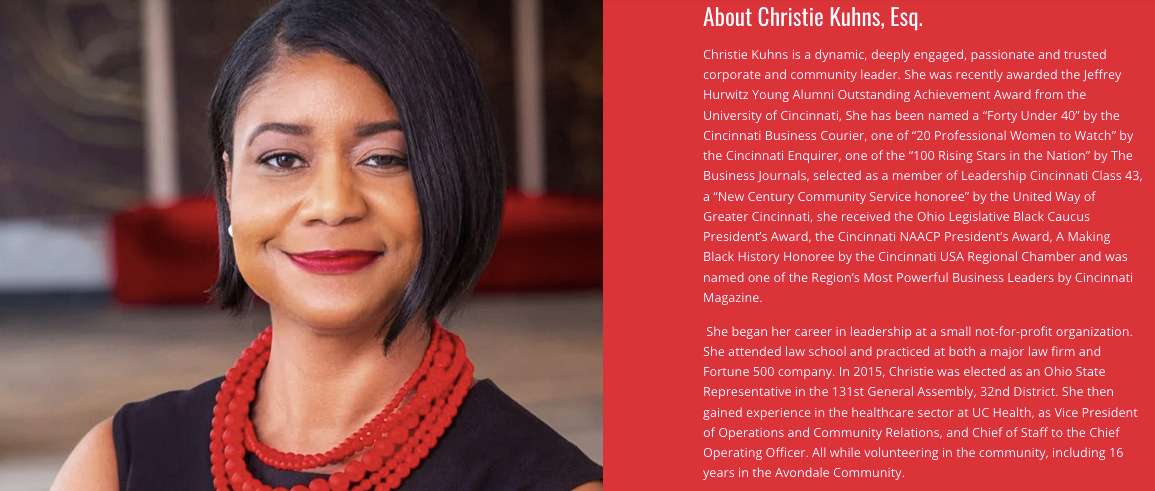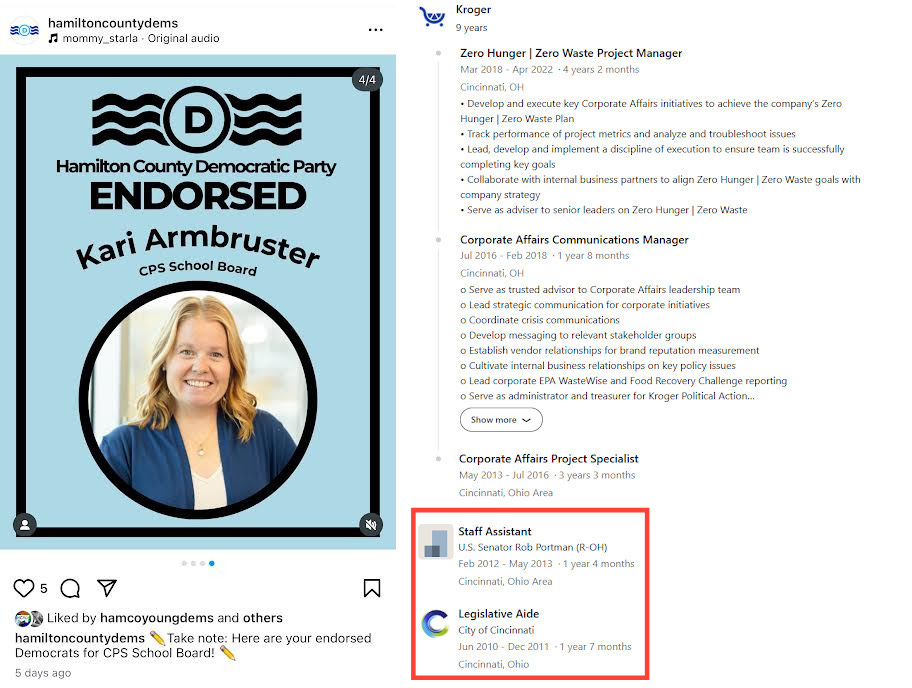Democrats in name only
The Queen City Contrarian is here to show how local corporations find and field Democratic candidates agreeable to their agenda.

During the 20th century, southwest Ohio was a Republican stronghold. Cincinnati and the surrounding suburbs were a reliable voting bloc for the county, state and federal Republican parties.
But demographics have shifted in 2025. Hamilton County is now considered a blue area, and the city of Cincinnati is even bluer.
This has vaulted the Hamilton County Democratic Party into unexpected power for the first time in a very long time. As they say, with great power comes great responsibility.
How Political Parties Work
At the county level, the party is composed of appointed and elected precinct executives.
A precinct executive (PE) is the lowest form of elected office someone can hold in Ohio. To put it simply, their neighbors elect them in the spring primary of even-numbered years.
Being a PE is one way to have direct influence over your local political party since PEs are tasked with deciding who the party leaders are and who receives the coveted party endorsements every election cycle.
In Hamilton County, the Republicans have lost so much power and influence that the corporate lobbyists are now running as precinct executives and co-opting the party away from labor unions and working-class people.
Corporate Influence and Key Players
The election of 2024 did nothing to dilute the stereotype that the Democratic Party is weak and ineffective.
There are likely several reasons for that. However, I’d argue that it’s mainly due to the Supreme Court’s Citizens United decision, which allowed corporations to funnel massive amounts of money into both political parties as a way to hedge their bets.
Labor unions cannot compete with the financial influence of major corporations. This has caused some of the Hamilton County Democratic Party (HCDP) endorsements, particularly for city-wide elections, to skew right and become corporatized.
The most pro-corporate endorsements typically come from the Cincinnati Democratic Committee (CDC), a special committee composed of only PEs residing within the city limits.
Two individuals lead the CDC.
The first is Anne Sesler, a corporate lobbyist and walking conflict of interest:
The second is former State Representative Christie Kuhns, who currently serves as the President and CEO of the Urban League of Greater Southwestern Ohio:
These two individuals hand-pick the precinct representatives who get to serve on the endorsement committees. These are two individuals who wield considerable political power, despite most people not even knowing their names.
In Cincinnati political circles, it’s a widely held belief that Kuhns is supposed to appease the more labor-friendly parts of HCDP, while Sesler is in charge of appeasing the corporations that call Cincinnati home.
Sesler and her employer have long lobbied county and citywide officials on behalf of companies such as FC Cincinnati, the Cincinnati Reds, Duke Energy, Teach for America and United Healthcare, to name a few.
Cincinnati corporations know that if they want to get an elected official’s attention, they should contact Selser.
It’s a concerning arrangement—interviewing candidates for office and then lobbying them once they are elected in large part thanks to the party’s endorsement. I’d argue it’s an obvious conflict of interest, and the CDC has been particularly hostile towards labor unions and their leadership since Sesler took hold of the committee.
This is most likely due to Sesler’s corporate bosses not liking those pesky labor unions that advocate for higher wages and fair working conditions.
Sesler has gained so much power within HCDP that she was able to get a Republican endorsed to be on HCDP’s School Board slate:
On June 11, the Cincinnati Democratic Committee convened and endorsed Kari Armbruster, a self-described “former Republican” who previously served on the staffs of former United States Republican Senator Rob Portman and former Cincinnati City Republican Councilmember Chris Bortz.
According to Armbuster’s LinkedIn page, she worked for Republican elected officials from 2010 through 2013. However, according to her voting history, she was voting in Republican primaries as recently as 2016:
Unsurprisingly, her former employment with Portman and Bortz was not discussed at the CDC meeting on June 11.
Within Cincinnati political circles, rumors have been swirling that Sesler’s primary objective this endorsement cycle was to secure an ally for pro-privatization school board member Ben Lindy.
Lindy is the former Executive Director of Teach for America (TFA) in Southwest Ohio. For those unfamiliar with TFA, it’s a pro-privatization and anti-labor group primarily funded by the Walton Family Foundation.
Sesler was able to rally the corporate lobbyists-turned-precinct executives in 2023 and get Lindy endorsed by HCDP, completely ignoring the recommendations and concerns brought forth from labor unions and pro-public education party members.
It appears Selser has found Lindy an ally in Armbruster.
Call to Action
At this point, there is nothing that can be done about HCDP endorsing a “former Republican” who worked for Rob Portman.
The only way HCDP’s endorsement doesn’t propel her over the finish line is for Cincinnati residents to reject her candidacy and vote for a non-endorsed candidate instead.
Cincinnati Public Schools is a district that serves a large population of low-income students (85%) and students with disabilities (21%).
Do we really trust a former Portman staffer to do what’s best for these populations? Do we really trust her to play nice with labor unions and listen to their concerns and feedback?
Looking towards the future, one possible solution could be to run to be a precinct executive in your local Democratic Party. This could be a possible way to root out the corporate influence and shift the party back towards caring about real issues that affect regular people.
Another strategy is for labor to pull away from the Democratic Party, similar to what the American Federation of Teachers and AFSCME did with the DNC. Ultimately, we’ve come to a point in our country where we have a Republican Party and a Republican Party Lite.
If the so-called Democratic Party is now endorsing Republicans, why would anyone think differently? This is a political party that has clearly lost its way and needs to embrace working-class people and push the corporate lobbyists out.






![Autumn of the Black Snake: George Washington, Mad Anthony Wayne, and the Invasion That Opened the West [Book] Autumn of the Black Snake: George Washington, Mad Anthony Wayne, and the Invasion That Opened the West [Book]](https://substackcdn.com/image/fetch/$s_!YNAm!,w_1456,c_limit,f_auto,q_auto:good,fl_progressive:steep/https%3A%2F%2Fsubstack-post-media.s3.amazonaws.com%2Fpublic%2Fimages%2F06d221c8-e77a-41e5-a315-705bbbc0ca55_1613x2475.jpeg)

